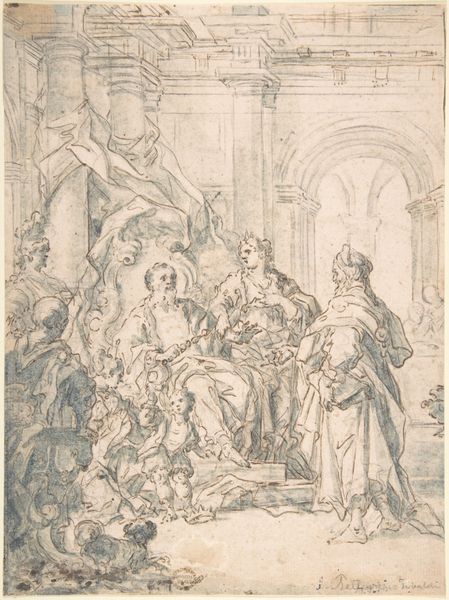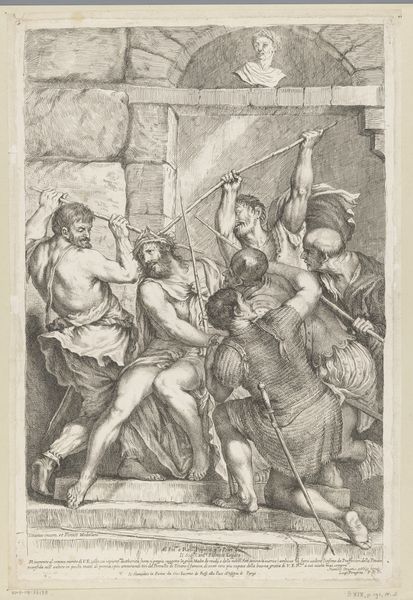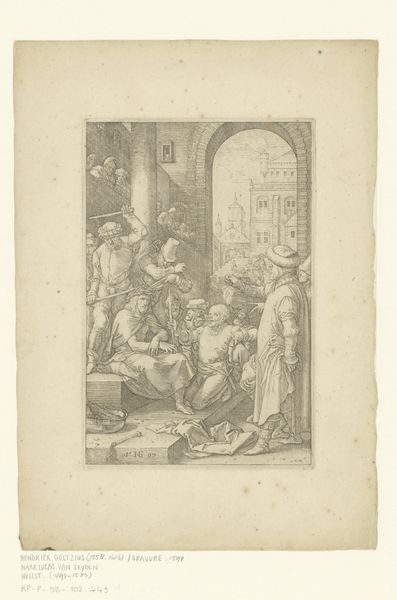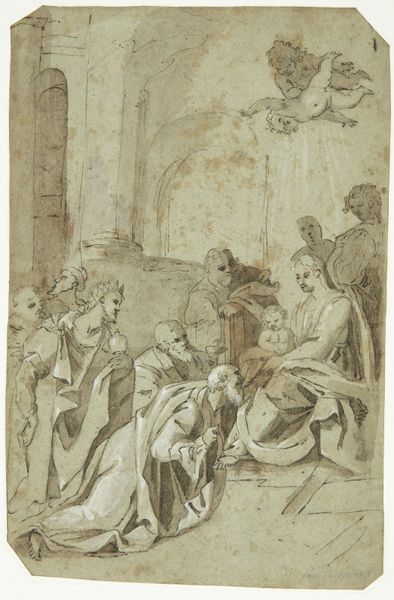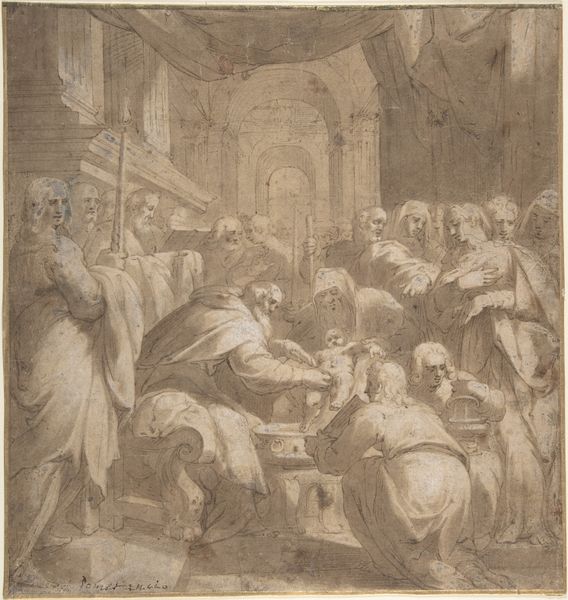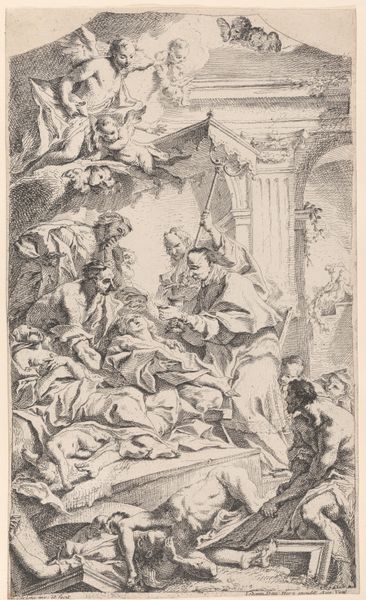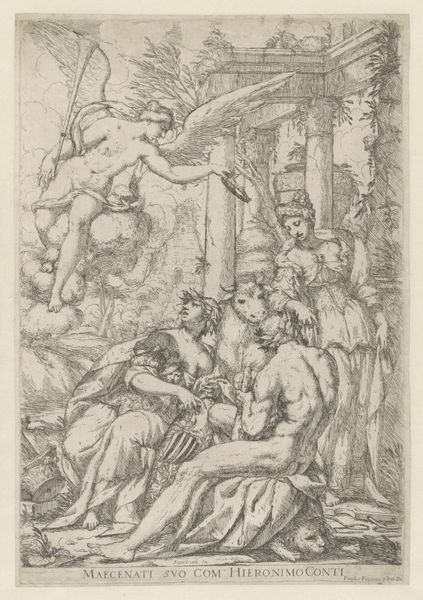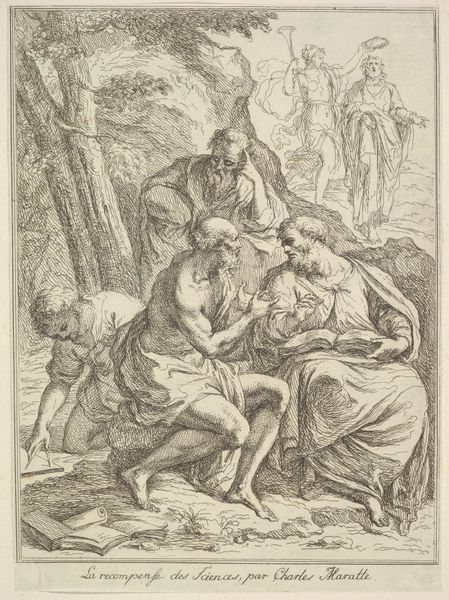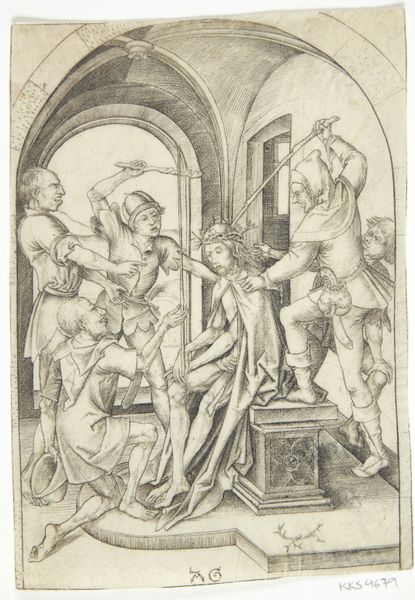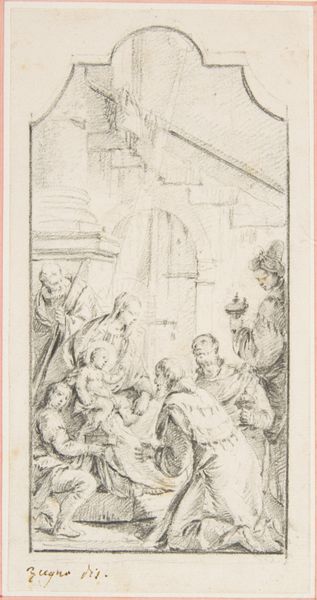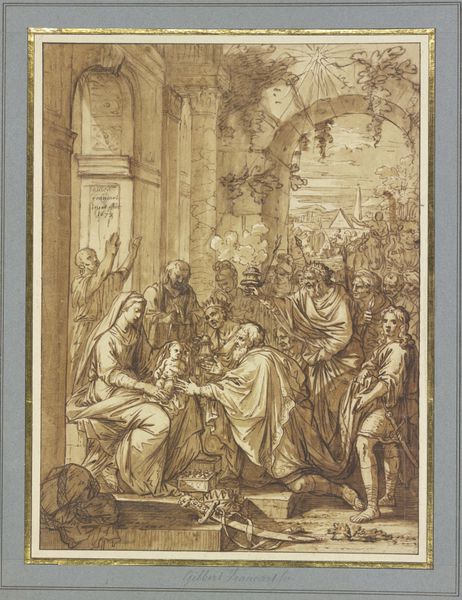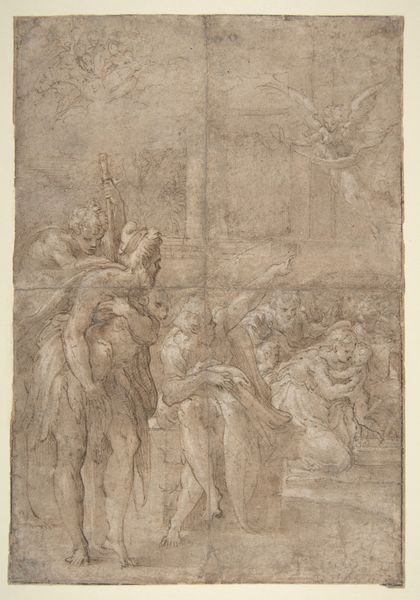
drawing, print
#
drawing
#
baroque
# print
#
figuration
#
history-painting
#
academic-art
Dimensions: sheet: 9 13/16 x 7 3/8 in. (25 x 18.8 cm)
Copyright: Public Domain
Editor: This print, "Raising of Lazarus," created sometime between 1620 and 1656 by Laurent de La Hyre, captures such a powerful biblical moment. There’s almost a frantic energy to the figures despite the delicate linework. How do you interpret the visual symbols at play here? Curator: This image resonates deeply with the historical memory of the Baroque period. Notice how La Hyre uses Lazarus's semi-nude body, not for sensuality, but as a potent symbol of vulnerability and rebirth. The surrounding figures express emotions from disbelief to reverence. Lazarus is brought back from a state that represented ultimate separation, but with this miracle he also re-enters society. Do you see how their gestures invite the viewer to consider their own mortality and faith? Editor: That's a compelling point about vulnerability and faith. I hadn't considered Lazarus’s nudity in that light. It seems significant then that he is surrounded and supported by a community of faith. Curator: Exactly! And note the ruined architectural setting, juxtaposing earthly decay with spiritual renewal. La Hyre uses it to underscore a world of constant flux, a hallmark of Baroque thought. Consider what it means to resurrect into such a broken world: perhaps not to escape suffering, but to bear witness. Editor: It’s fascinating to consider how La Hyre uses familiar biblical themes to reflect Baroque sensibilities around mortality and spirituality. Thank you for enriching my understanding of this piece! Curator: My pleasure. By decoding visual cues, we can access how artists of the past made sense of their world, and, perhaps, better understand our own.
Comments
No comments
Be the first to comment and join the conversation on the ultimate creative platform.
